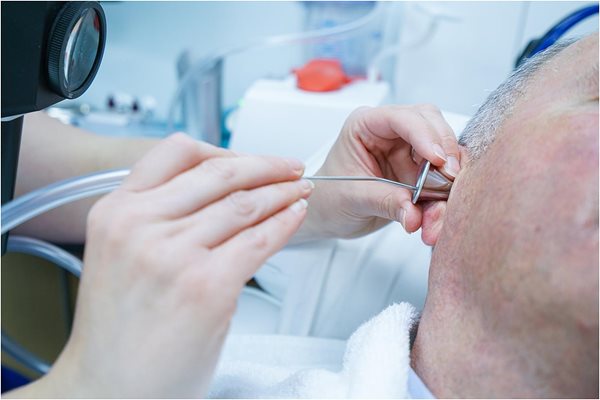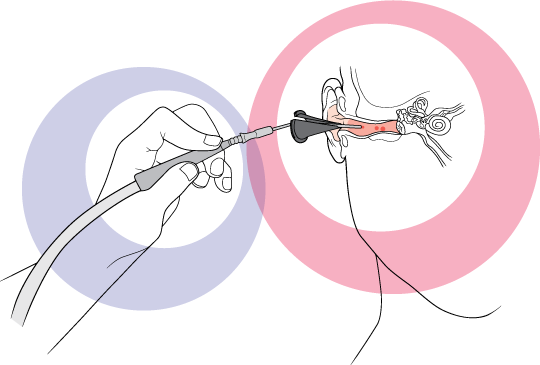Factors to Consider for Those Considering Manual Instrument Ear Wax Removal
Last Updated on 12th July 2023 by Admin
Ear wax, also known as cerumen, is a naturally occurring substance that helps protect and lubricate the ear canal. While ear wax is generally harmless, it can sometimes build up and cause discomfort or hearing difficulties. In such cases, manual instrument ear wax removal may be necessary. However, before attempting this procedure, there are several important factors to consider to ensure a safe and effective outcome. In this article, we will discuss these factors in detail and provide valuable insights for those considering manual instrument ear wax removal.
The Importance of Seeking Professional Advice
Before attempting any form of ear wax removal, it is crucial to consult with a healthcare professional, such as an ear, nose, and throat specialist or audiologist. They possess the necessary expertise and tools to accurately assess the situation and determine the most appropriate method of removal. Seeking professional advice is essential to avoid potential complications and ensure the procedure is performed correctly.
It is important to understand that manual instrument ear wax removal should only be considered after professional advice has been sought. Healthcare professionals, such as ear, nose, and throat specialists or audiologists, have the expertise and specialized tools to accurately assess the situation and determine the most suitable method of removal. They can also identify any underlying conditions or complications that may require alternative approaches to wax removal. By seeking professional advice, individuals can ensure a safe and effective outcome and minimize the risk of complications.
Understanding the Nature of Ear Wax Blockages
Ear wax blockages occur when excess wax accumulates and hardens in the ear canal, obstructing the natural flow of sound waves. It is important to understand that not all ear wax blockages require manual intervention. In many cases, the body’s natural mechanisms will gradually remove the blockage without any external assistance. Therefore, it is essential to determine the severity of the blockage before considering manual instrument ear wax removal.
Ear wax blockages can vary in severity, ranging from mild to severe. Mild blockages may not require manual intervention and can often be resolved using gentle at-home remedies, such as ear drops or irrigation kits. These remedies can help soften the wax and facilitate its natural removal. However, more severe blockages may require the expertise of a healthcare professional to safely and effectively remove the wax using specialized tools.
To determine the severity of the blockage, individuals should pay attention to symptoms such as hearing loss, earache, tinnitus (ringing in the ears), or a feeling of fullness in the ear. If these symptoms persist or worsen, it is important to seek professional advice to accurately assess the situation and determine the most appropriate method of removal.
Factors to Consider for Manual Instrument Ear Wax Removal
1. Severity of the Blockage
The severity of the ear wax blockage plays a significant role in determining the most appropriate method of removal. Mild blockages may be resolved using gentle at-home remedies, such as ear drops or irrigation kits. However, more severe blockages may require the expertise of a healthcare professional to safely and effectively remove the wax using specialized tools.
When considering manual instrument ear wax removal, it is important to assess the severity of the blockage. Mild blockages, characterized by minimal symptoms and minimal impact on hearing, can often be managed with at-home remedies. These remedies include ear drops that help soften the wax or irrigation kits that gently flush out the blockage. However, if the blockage is more severe, with significant symptoms and noticeable hearing loss, it is advisable to seek professional help. Healthcare professionals have the knowledge and tools to safely remove the wax using specialized instruments, ensuring a successful outcome.
2. Medical Conditions and Previous Ear Surgeries
Individuals with certain medical conditions, such as a perforated eardrum or chronic ear infections, should exercise caution when considering manual instrument ear wax removal. These conditions can increase the risk of complications and may require alternative methods of wax removal. Similarly, individuals with a history of ear surgeries should consult with their healthcare provider before attempting any manual removal techniques.
It is important to consider any underlying medical conditions or previous ear surgeries before opting for manual instrument ear wax removal. Certain conditions, such as a perforated eardrum or chronic ear infections, can increase the risk of complications during the procedure. In such cases, alternative methods of wax removal may be recommended to ensure the safety and well-being of the individual. Similarly, individuals who have undergone previous ear surgeries should consult with their healthcare provider to determine the most suitable approach for wax removal.
3. Pain or Discomfort
If you experience pain, discomfort, or any unusual symptoms associated with the ear wax blockage, it is crucial to consult with a healthcare professional before attempting any form of removal. They can assess the underlying cause of your symptoms and determine the safest and most effective approach for wax removal.
Experiencing pain, discomfort, or any unusual symptoms associated with the ear wax blockage should prompt immediate consultation with a healthcare professional. These symptoms may indicate an underlying condition or complication that requires professional attention. Attempting to remove the wax without proper assessment and guidance can potentially worsen the symptoms or cause further damage. By consulting with a healthcare professional, individuals can receive a thorough evaluation and appropriate treatment to address the root cause of the symptoms and safely remove the wax.
4. Previous Experience and Skill Level
Manual instrument ear wax removal requires precision and care. It is essential to assess your own experience and skill level before attempting the procedure. If you are unsure or lack the necessary expertise, it is strongly recommended to seek professional help. Improper techniques or tools can lead to further complications or damage to the ear canal.
Before considering manual instrument ear wax removal, individuals should honestly assess their own experience and skill level. This procedure requires precision and care to ensure the safe and effective removal of the wax. If you do not have prior experience or feel unsure about your abilities, it is highly advisable to seek professional help. Healthcare professionals have undergone extensive training and possess the necessary expertise to perform the procedure correctly, minimizing the risk of complications or damage to the ear canal.
5. Potential Complications
While manual instrument ear wax removal is generally safe when performed correctly, there are potential risks and complications that need to be considered. These include accidental injury to the ear canal, perforation of the eardrum, or pushing the wax further into the ear canal. Understanding these risks is important to make an informed decision regarding the most suitable method of ear wax removal.
It is essential to be aware of the potential risks and complications associated with manual instrument ear wax removal. These can include accidental injury to the delicate tissues of the ear canal, perforation of the eardrum, or inadvertently pushing the wax further into the ear canal. Understanding these risks allows individuals to make an informed decision about the most suitable method of ear wax removal. In some cases, alternative techniques such as microsuction or irrigation may be recommended to minimize the risk of complications.
Professional Ear Wax Removal Techniques
For those considering manual instrument ear wax removal, it is essential to be aware of the various professional techniques available. Some commonly used techniques include:
1. Microsuction
Microsuction is a gentle and effective method of ear wax removal that utilizes a low-pressure suction device and a microscope or loupe magnification. This technique allows healthcare professionals to visualize the ear canal and remove the wax blockage without the need for water irrigation or manual instrumentation.
Microsuction is a highly precise and effective technique for ear wax removal. It involves using a low-pressure suction device coupled with a microscope or loupe magnification to visualize the ear canal and safely remove the wax blockage. This method does not require water irrigation or manual instrumentation, making it suitable for individuals with a history of ear surgeries or those prone to ear infections. Microsuction is often considered the gold standard for professional ear wax removal due to its safety and effectiveness.
2. Curettage
Curettage involves the use of specialized instruments, such as curettes or spoons, to scoop out the ear wax from the ear canal. This technique should only be performed by trained healthcare professionals to minimize the risk of injury or damage.
Curettage is a technique that involves using specialized instruments, such as curettes or spoons, to gently scoop out the ear wax from the ear canal. This method requires precision and should only be performed by trained healthcare professionals to minimize the risk of injury or damage. Curettage is particularly useful for removing stubborn or hardened wax that cannot be effectively removed through other methods. It is important to note that self-attempted curettage can lead to complications and should be avoided.
3. Irrigation
Irrigation, also known as ear syringing, involves the use of a gentle stream of warm water to flush out the ear wax blockage. This technique should be performed carefully to prevent excessive pressure or water entering the middle ear.
Irrigation, or ear syringing, is a technique that uses a gentle stream of warm water to flush out the ear wax blockage. This method can be effective for softening and dislodging the wax, allowing it to be naturally expelled from the ear. However, it is crucial to perform irrigation carefully to prevent excessive pressure or water from entering the middle ear. Improper irrigation techniques can lead to discomfort, damage, or infection. It is recommended to seek professional guidance to ensure safe and effective irrigation.
Conclusion
Manual instrument ear wax removal can be a safe and effective method for addressing ear wax blockages. However, it is crucial to consider various factors, such as the severity of the blockage, medical conditions, previous surgeries, pain or discomfort, experience and skill level, and potential complications. Seeking professional advice is the best course of action to ensure a successful outcome. Remember, your hearing health is precious, and taking the necessary precautions will help maintain optimal ear health.
In conclusion, manual instrument ear wax removal can provide relief for individuals experiencing ear wax blockages. However, it is essential to carefully consider various factors before attempting the procedure. Seeking professional advice from healthcare professionals is crucial to accurately assess the severity of the blockage and determine the most appropriate method of removal. Factors such as underlying medical conditions, previous ear surgeries, pain or discomfort, experience and skill level, and potential complications should be taken into account. By prioritizing your hearing health and seeking professional guidance, you can ensure a safe and effective outcome for manual instrument ear wax removal.
-
Why is it important to seek professional advice before attempting manual instrument ear wax removal?
Seeking professional advice is crucial because healthcare professionals have the expertise and specialized tools to accurately assess the situation and determine the most suitable method of removal. They can also identify any underlying conditions or complications that may require alternative approaches to wax removal. By seeking professional advice, individuals can ensure a safe and effective outcome and minimize the risk of complications.
-
What should I consider when assessing the severity of an ear wax blockage?
When assessing the severity of an ear wax blockage, individuals should pay attention to symptoms such as hearing loss, earache, tinnitus (ringing in the ears), or a feeling of fullness in the ear. If these symptoms persist or worsen, it is important to seek professional advice to accurately assess the situation and determine the most appropriate method of removal.
-
What factors should I consider before attempting manual instrument ear wax removal?
Before attempting manual instrument ear wax removal, individuals should consider the severity of the blockage, any underlying medical conditions or previous ear surgeries, pain or discomfort associated with the blockage, and their own experience and skill level. It is important to assess these factors to determine if professional help is needed or if it is safe to proceed with the removal technique.
-
What are the potential risks and complications of manual instrument ear wax removal?
The potential risks and complications of manual instrument ear wax removal include accidental injury to the ear canal, perforation of the eardrum, or pushing the wax further into the ear canal. It is important to be aware of these risks to make an informed decision regarding the most suitable method of ear wax removal.







